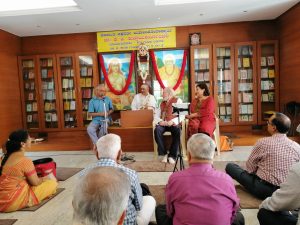Q: It seems to me that so many questions on Advaita Vedanta are explained with reference to the 3 levels of reality: pratibhasa, vyavahara and paramartha – why then do we not see more reference to these levels in books about Advaita? I have found in my reading very few that mention them up front, or as a matter of great importance. And, of course, hardly ever mentioned, if at all, in Neo-Advaita tomes.
A: That’s a good question.
The ‘bottom line’ of Advaita is that there is only Consciousness (sarvam khalvidam brahma – all this is Brahman). So the ‘teaching’ of the neo-Advaitin – ‘this is it’ and similar pronouncements – is not, strictly speaking, wrong. The problem with it is that it is not very helpful!
The point is that, as soon as we separate out a form in perception and give it a name, we are apparently in the realm of duality. And it is difficult to move from that position to one of accepting the truth of non-duality. So traditional Advaita takes things very slowly. For the new seeker, it begins from our present experience and understanding and moves one step at a time, as it were, supplanting the initial teaching with something more refined and nearer to the truth.
Continue reading
